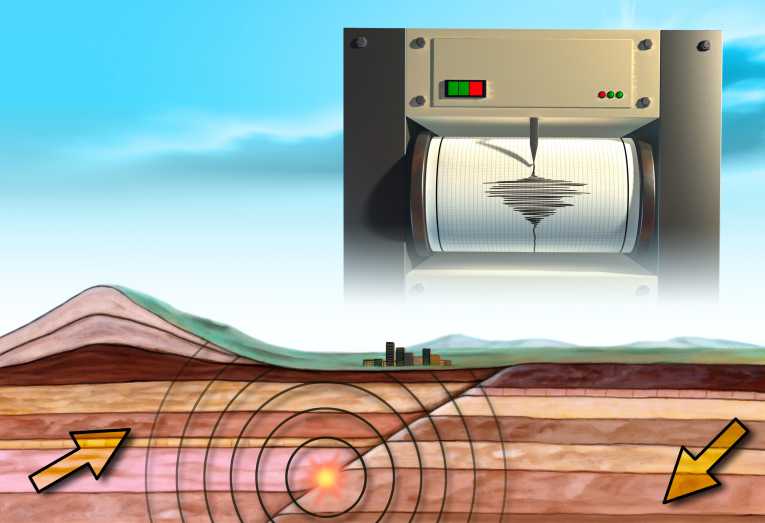Earthquakes aren't always as fast and furious as the natural disasters that devastated Japan and New Zealand this year. They can be long slow rumbles that last for 4 weeks. And although these slower cousins can't be felt, the monitoring of their cycles may give clues to how stress builds up deep in the earth's crust - and eventually lead to a megathrust quake.
Seismologists based at the University of Washington (UW) - who have been tracking these so-called 'episodic tremors' - have now discovered another intriguing aspect to their behavior. After a gradual rumbling through the slip zone, the tremors can suddenly reverse direction - and pass relatively quickly back through the area that the slower tremors have crawled.
The team from UW, which included lead author Heidi Houston, have just published their results in Nature Geoscience. The ponderous earthquakes they have been studying, for some 6 years now, lie just on their doorstep - stretching from the southern Puget Sound area to the northern Olympic Peninsula. Generally, the episodic tremors start in the south, and slowly rip their way north, before they kick back in their 'rapid tremor reversal' phase.
Much about these earthquakes is poorly understood. They are thought to start some 20 to 30 miles down - much deeper than the more obvious ground-shaking earthquakes of the news bulletins. There, the tectonic plates rubbing up against each other - the Juan de Fuca plate, which is being pushed under the North American plate - are much hotter.
Scientists think this makes them able to slide slowly past one another, unlike the cooler, more brittle plates that cause the more destructive types of earthquake. Those start at around 12 miles depth, and are much more energetic because they build up stresses on focal points for hundreds of years.
The new twist on the slow episodic tremors - the backward moving waves that round off many slow earthquake events - may result from the creation of a weak zone. Houston said ''Regular tremor and slip goes through an area fairly slowly, breaking it. Then once it's broken and weakened an area of the fault, it can propagate back across that area much faster.''
It may be that tidal stresses are at play, as a trigger for these reversals. The team noted that rapid tremor reversals were most common near the Strait of Juan de Fuca, which experiences strong tidal flows. They may also play a part in understanding the long-term, cycle which produces a major earthquake - of magnitude 9.0 - in the area once every 500 years or so.
The last such earthquake was in 1700. That places the region in the build-up for the next 'big one'. As Houston said ''various aspects of the tremor signal may change as the seismic cycle matures. It's also possible that the noise our seismometers detect from tremor events might get louder just before a big earthquake.''










